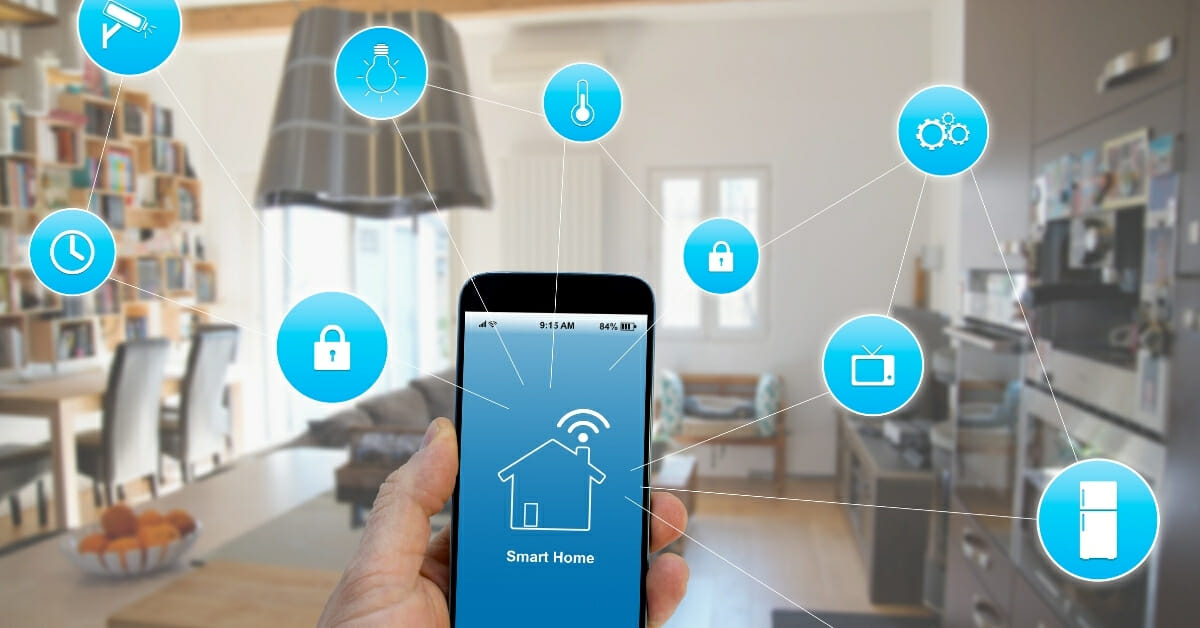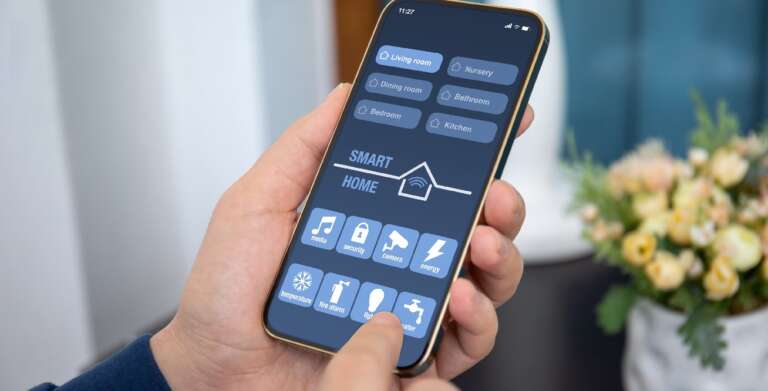To secure your smart home, use strong and unique passwords for all your devices and Wi-Fi network. Additionally, regularly update your smart devices’ firmware and enable two-factor authentication when available.
As our homes become more interconnected with smart devices and technology, it is important to ensure the security of our smart homes. With the rise of internet-enabled devices such as smart speakers, thermostats, and security cameras, the potential for security breaches becomes a significant concern.
Unauthorized access to these devices can lead to invasions of privacy, theft, or even physical harm. Therefore, taking proactive steps to secure your smart home is vital. To begin with, make sure you set unique and strong passwords for all your devices and Wi-Fi network. Weak or default passwords are easy targets for hackers. Additionally, regularly update the firmware of your smart devices as these updates often include security patches and bug fixes. Enabling two-factor authentication when available adds an extra layer of protection by requiring a secondary verification method, such as a fingerprint or a unique code. By implementing these security measures, you can safeguard your smart home and enjoy the convenience and benefits of a connected lifestyle with peace of mind.
Importance Of Smart Home Security
1. Growing reliance on smart home devices: In today’s world, people are increasingly relying on smart home devices to enhance comfort, convenience, and security in their homes. From thermostats and lighting to security cameras and voice assistants, these devices have become an integral part of our daily lives.
2. Increased vulnerability to cyber threats: However, with the benefits of smart home technology comes the risk of cyber threats. As these devices are connected to the internet, they can be potential targets for hackers. Unauthorized access to your smart home devices can lead to privacy breaches, compromised personal information, and even physical security risks.
3. Risk of unauthorized access to personal information: Your smart home devices store a plethora of personal information, including your daily routine, schedules, and even bank details. If these devices are not properly secured, cybercriminals can exploit vulnerabilities to gain unauthorized access, leading to privacy infringements and identity theft.
Securing Your Wi-fi Network
Securing your Wi-Fi network is crucial in order to protect your smart home devices from unauthorized access. One of the first steps in securing your network is choosing a strong Wi-Fi password. Make sure your password is at least 12 characters long and includes a combination of uppercase and lowercase letters, numbers, and special characters.
Enabling network encryption, specifically WPA2 (Wi-Fi Protected Access 2), is another essential measure. WPA2 provides strong security by encrypting the data that is transmitted over your network. This prevents hackers from intercepting and accessing your sensitive information.
Regularly updating your router firmware is also important for maintaining a secure Wi-Fi network. Router manufacturers release firmware updates to fix security vulnerabilities and improve network performance. Keep an eye out for firmware updates and make sure to install them promptly.
Protecting Smart Home Devices
One of the key steps in securing your smart home devices is to research the security features of the devices before making a purchase. It’s important to look for devices that have strong security protocols and encryption capabilities. Additionally, changing the default passwords and usernames that come with the devices is crucial for protecting your home network. Many devices often come with generic login credentials, which can make them vulnerable to hacking. Keeping your devices up-to-date with the latest firmware and security patches is also essential in ensuring their security. Manufacturers regularly release updates that address known vulnerabilities, so staying current with these updates will help to safeguard your smart home devices.
Implementing Multi-factor Authentication
- Setting up multi-factor authentication for smart home apps
- Using biometric authentication methods (e.g. fingerprint, facial recognition)
- Regularly reviewing and updating authentication methods
In today’s digital age, securing your smart home has become more important than ever. One effective way to enhance the security of your smart home is by implementing multi-factor authentication. This adds an extra layer of security to your smart home apps, making it harder for unauthorized individuals to gain access to your personal information and control your devices.
One method of implementing multi-factor authentication is by using biometric authentication methods such as fingerprint or facial recognition. These methods rely on unique physical characteristics, maximizing the security of your smart home.
Additionally, it is essential to regularly review and update your authentication methods. This ensures that you are using the latest security features and protecting against any potential vulnerabilities.
By following these steps, you can significantly enhance the security of your smart home, providing peace of mind and protecting your privacy.
Enhancing Network Security
One of the key steps to secure your smart home is to set up a separate IoT network. By creating a dedicated network for your smart devices, you can isolate them from your main network, minimizing the risk of unauthorized access. Additionally, setting up a firewall to monitor and control incoming and outgoing traffic is crucial. A firewall acts as a barrier, allowing only authorized data to enter or leave your network. It provides an extra layer of protection, preventing potential hackers from gaining access. Moreover, using a virtual private network (VPN) for remote access to your smart home is highly recommended. A VPN creates a secure connection, encrypting your data, and allows you to access your smart devices safely.

Credit: www.blackfoot.com
Educating Family Members On Security Best Practices
Educating your family members on security best practices is crucial for ensuring the safety of your smart home. One important aspect is creating strong passwords and avoiding password sharing. Encourage your family to use a combination of uppercase and lowercase letters, numbers, and special characters in their passwords. Remind them to avoid reusing passwords across different accounts to minimize the risk of a security breach. Phishing emails and scams are common threats, so it is essential to educate your family about how to recognize and avoid them. Teach them to be cautious of suspicious emails, links, and attachments and to verify the legitimacy of any requests for personal information. Lastly, emphasize the risks of giving access to unauthorized individuals. Make sure your family understands that only trusted individuals should have access to your smart home’s devices and accounts to prevent any potential security breaches.
Frequently Asked Questions Of How To Secure Your Smart Home
How Can I Secure My Smart Home From Hackers And Cyberattacks?
To secure your smart home, make sure to keep your devices updated with the latest firmware and use a unique, strong password for each device. Avoid using default login credentials and consider using a separate network for your smart devices.
What Are The Best Practices To Enhance The Security Of My Smart Home?
To enhance the security of your smart home, enable two-factor authentication on your devices, disable unnecessary features, regularly monitor your network for any suspicious activity, and consider investing in a reputable antivirus solution.
How Can I Protect My Smart Home From Unauthorized Access?
To protect your smart home from unauthorized access, regularly check and update the security settings of your devices, disable remote access when not needed, and consider using a firewall or virtual private network (VPN) for an extra layer of protection.
What Should I Do If My Smart Home Device Gets Hacked?
If your smart home device gets hacked, immediately disconnect it from the network, reset it to factory settings, update its firmware, and change all the passwords associated with the compromised device. Contact the device manufacturer for further assistance if needed.
Are There Any Privacy Concerns With Smart Home Devices?
Yes, there are privacy concerns with smart home devices. To address them, thoroughly read and understand the device’s privacy policy, disable any unnecessary data sharing options, and regularly review and delete any stored data that you no longer need.
Can Someone Hack Into My Smart Home Camera?
While it is technically possible for someone to hack into your smart home camera if it is not properly secured, there are steps you can take to mitigate this risk. Ensure your camera’s firmware is up-to-date, use a strong and unique password, and set up a secure network for your camera.
How Can I Secure My Smart Home Network?
To secure your smart home network, change the default login credentials for your Wi-Fi router, enable encryption (WPA2 or higher), hide your Wi-Fi network’s SSID, regularly check for firmware updates for your router, and avoid connecting unknown devices to your network.
What Are Some Common Vulnerabilities In Smart Home Devices?
Common vulnerabilities in smart home devices include weak default passwords, security flaws in the device’s firmware or software, lack of encryption, and improper configuration or updates by users. Regularly checking for updates and following security best practices can help minimize these vulnerabilities.
Are There Any Smart Home Security Tools I Can Use?
Yes, there are smart home security tools available. These include network security scanners, intrusion detection systems (IDS), device monitoring apps, and smart home security platforms that offer comprehensive protection for all your devices.
Can I Use Smart Home Devices Without Compromising Security?
Yes, you can use smart home devices without compromising security. By following security best practices such as using strong passwords, keeping devices updated, and being vigilant about your network security, you can enjoy the convenience of smart home devices while maintaining a high level of security.
Conclusion
Taking the necessary steps to secure your smart home is crucial in today’s digital landscape. By following these guidelines, you can enhance the protection of your personal information and ensure the safety of your devices and network. From securing your Wi-Fi network to using strong passwords and keeping firmware updated, these practical tips will help safeguard your smart home against potential cyber threats.
By implementing these measures, you can enjoy the convenience and comfort of a smart home without compromising your security.

